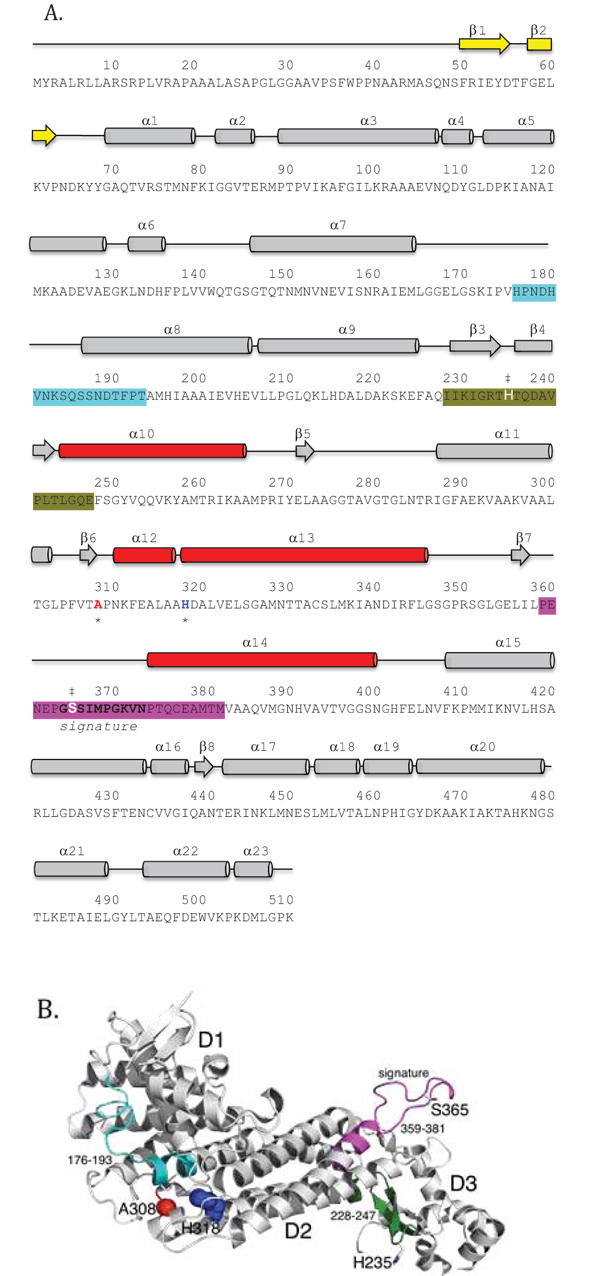Fig. (2)
Primary and tertiary structure representations of the fumarase family highly conserved regions. (A) The primary sequence of human fumarase (P07954: FUMH_HUMAN) has been annotated with secondary structural elements, fumarase family highly conserved regions, active site residues H235 and S365, and the clinically observed variant (A308 and H318) locations. The three regions of high conservation observed within the fumarase family have been colored accordingly: cyan (region 1 residues 176-193), dark green (region 2 residues 228-247), and magenta (region 3 residues 359-381). Region 3 also defines the “signature sequence” for the fumarase super-family. Regions 1 and 3 form the majority of the substrate-binding site, while regions 2 and 3 contribute the catalytic groups H235 and S365 (denoted by the double dagger symbol). Additionally, A308 and H318 have been denoted with an asterisk and colored red and blue, respectively. (B) The tertiary structure of the fumarase monomer (PDB ID: 3E04 [40]) emphasizes the three-dimensional juxtaposition of the highly conserved regions within the fumarase family. The tertiary structure has been colored and annotated similar to panel (A). The three-dimensional view of the fumarase monomer emphasizes (1) the spatial distance between the highly conserved regions (1-3) and (2) the locations of A308 and H318 near α-helices 12 and 13 of D2.


